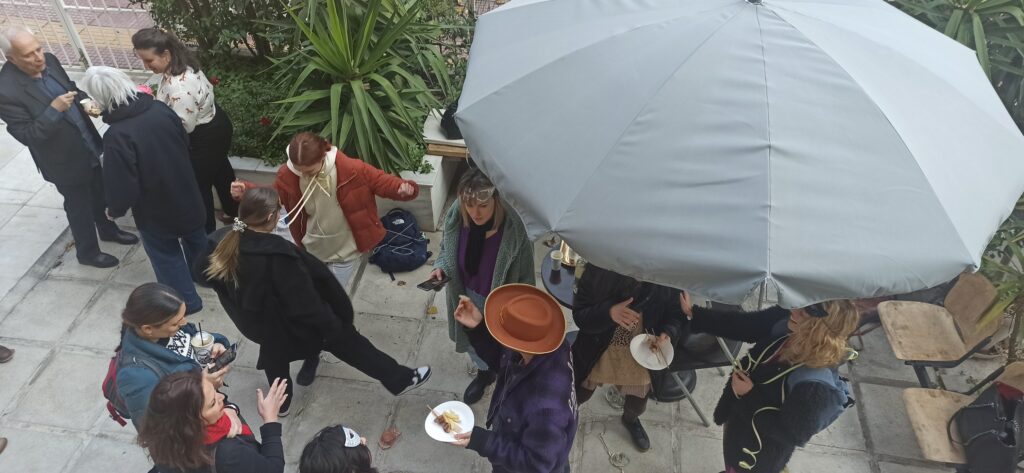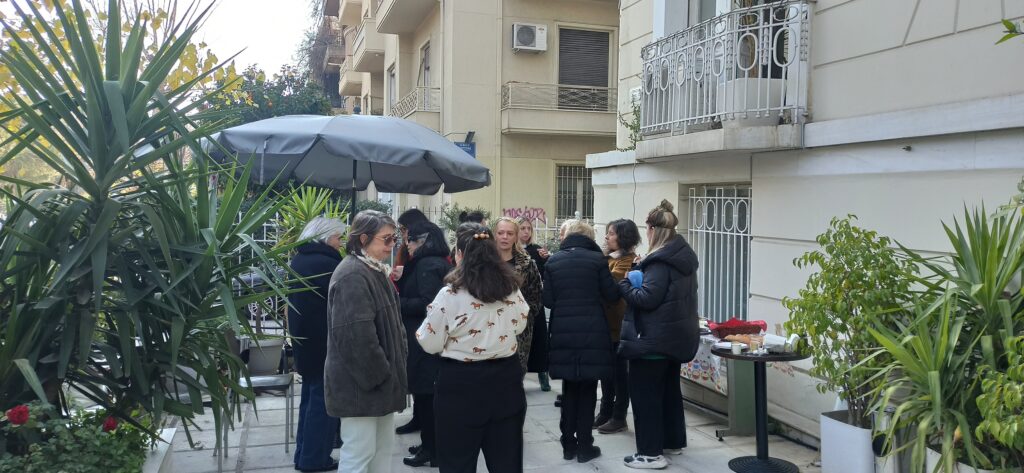We ate pork skewers (kalamakia – souvlakia) which were accompanied by starters, salads, wine and beverages! Though it is a meat eating day, we also respected our vegetarian or vegan students, providing a variety of options.
We also had great party music on the background as well as several confetti and masque items to embrace the party spirit.
Here some pictures as a proof of the above!







Also, here is a brief history about this celebration:
The traditional Tsiknisma Holy Thursday is the Thursday of the second week of the Trinity. The three weeks of the Triod are Prophonia, Apocreo and Tyrofagos. During the first week, the usual fast of Wednesday and Friday was stopped, while in the second week (of course) the fast was in effect, so Tsiknopepti was a holiday. The name “Tsiknopepti” comes from the word “tsikna”, i.e. the smell of burnt roasted meat. On this day, dinner consists of grilled or fried meat, two cooking methods that produce a strong kick. In the olden days, it was important that the house smelled like chicken. The housewives baked baklava, galaktobureko or semolina halva to make the house smell like butter. The consumption of large quantities of food and drink that accompany the Tsiknopepti table are characteristics of the day. According to tradition, they are related to the euphoria of the earth, are combined with Christianity and prepare the faithful for Great Lent. It is also believed that smells from the kitchen ward off evil and bring people into the house. Other countries also celebrate their own Maundy Thursday: the French have “Mardi Gras” (“Fat Tuesday”) while the Germans have “Weiberfastnacht”.

